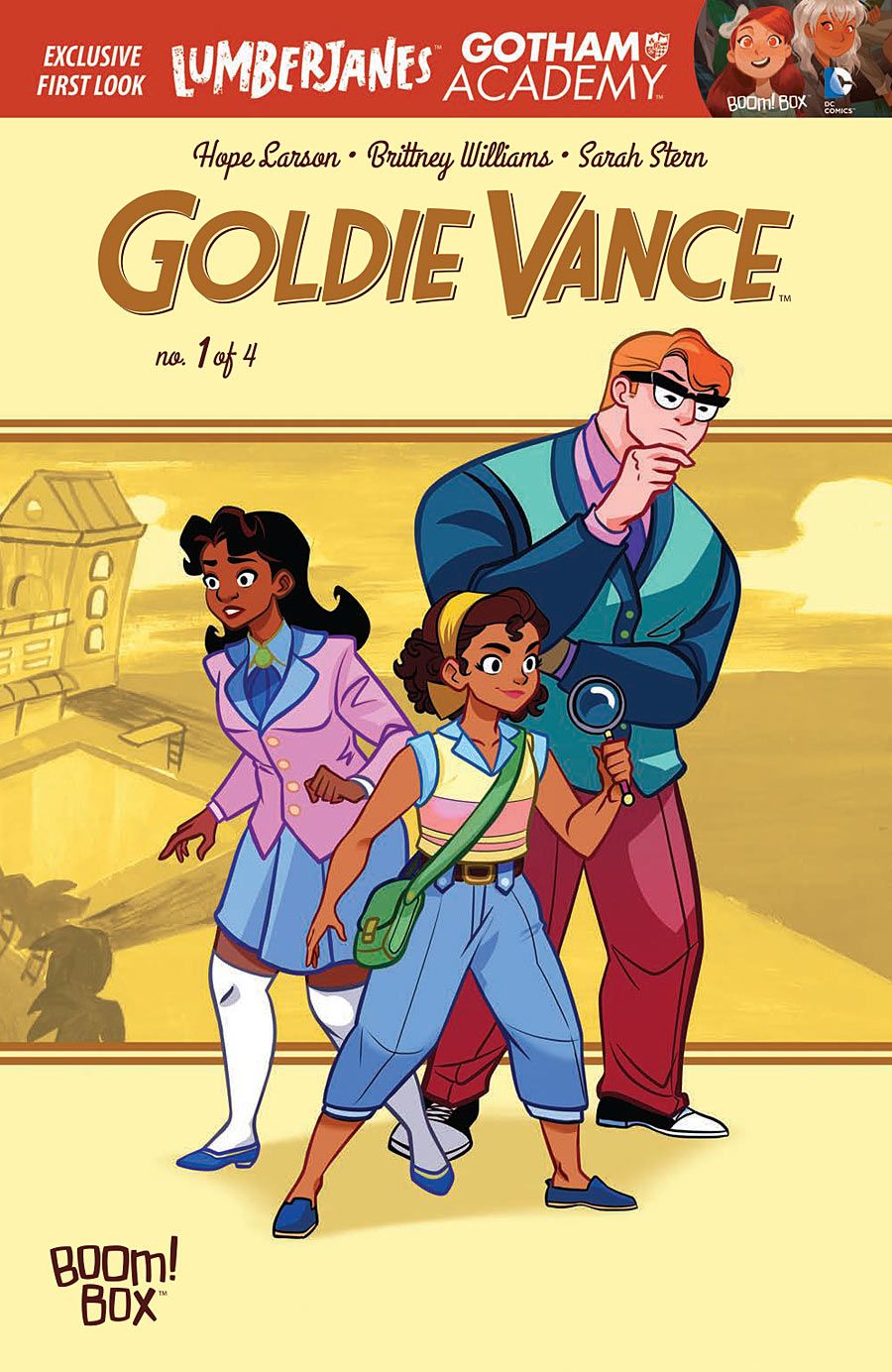Hope Larson and Brittney Williams introduce readers to a new girl detective in "Goldie Vance" #1. After Goldie locates a missing kid in a one-page warm-up, her cheerful, can-do attitude sets the tone of the story.
Larson quickly establishes both the setting and the cast, which have an admirable amount of diversity in race and body shape. The characters end up as recognizable tropes: there's the nosy, enthusiastic Goldie; Cheryl, a pretty friend and sidekick (like Bess to Goldie's Nancy Drew); and later on, a possible bad boy love interest. However, Goldie's high spirits make for an amusing foil to the hotel's official in-house detective, the lugubrious Walter Tooey (think of him as Inspector Lestrade to Goldie's Sherlock).
The chatter between Goldie and her dad is convincing in its casual rhythms, but the dialogue in other scenes feels more cookie-cutter and oddly retro, but Williams' strong facial expressions and body language add humor and emotional depth. In the introductory scene, there's a hilarious contrast between Tav's blase facial expression and his parents' joy and relief. Likewise, the scene in Walter's office gets funnier when Goldie takes out her reporter's notebook and narrows her eyes in anticipation.
Unfortunately, the mystery fizzes out early. Although plausible, Goldie's deduction doesn't feel earned or meaningful because of the lack of buildup. The premature arrival of the correct solution immediately kills off suspense. The auto racing shenanigans in the second half of "Goldie Vance" #1 are meant to make up for this. The race shows Goldie's competence in yet another arena and introduces another set of characters, including the memorable Skunk Hess, but the whole race feels like too much of an early shift away from the detective genre and Goldie's victory is too predictable.
The thief's motivations are sympathetic, but Larson's storytelling minimizes both the crime (easily a fireable offense) and the Ferris Bueller-level risks Goldie takes during her joyride. These adult choices and transgressions have a weird lack of consequences and they don't mesh with Williams' cartoony style. Additionally, Williams' clean linework is very attractive, but it's hard to get a read on characters' ages. Goldie looks like she could be anywhere from twelve to twenty years old.
Sarah Stern's color work has exquisite detail and hue variation on each page. She shifts to neutrals in Walter's office to match his formal, melancholy personality, and to even darker shades for the ominous cliffhanger panel. Larson does a good job seeding the second issue's mystery. Dieter Ludwig's statement that the necklace is "without value" piques the reader's curiosity about what he really means and why he wants it back, and the strange details in the last bring back the atmosphere of mystery.
"Goldie Vance" #1 has weak pacing and plot twists, but the exposition avoids information dumps and the characters are engaging enough that I'm still on board for the next adventure, especially if the disappearance of Mr. Ludwig ends up having more surprises and depth than the mystery of the missing necklace.

